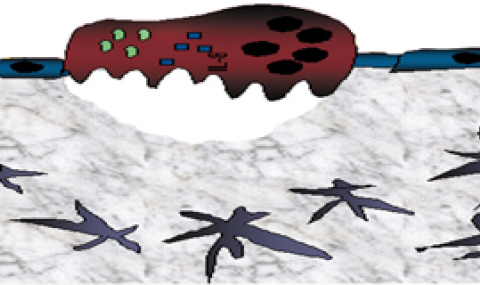Hematopoietic stem and progenitor cells (HSPCs) are regulated by various bone marrow stromal cell types.
Here we identified rare activated bone marrow monocytes and macrophages with high expression of a-smooth muscle actin (α-SMA) and the cyclooxygenase COX-2 that were adjacent to primitive HSPCs.
These myeloid cells resisted radiation-induced cell death and further upregulated COX-2 expression under stress conditions. COX-2-derived prostaglandin E2 (PGE2) prevented HSPC exhaustion by limiting the production of reactive oxygen species (ROS) via inhibition of the kinase Akt and higher stromal-cell expression of the chemokine CXCL12, which is essential for stem-cell quiescence.
Our study identifies a previously unknown subset of α-SMA+ activated monocytes and macrophages that maintain HSPCs and protect them from exhaustion during alarm situations.
[figure:center:1]
[figure:center:2]
Publication in Nature Immunology

Figure 1a. αSMA+ macrophages keep stem cells young. Nat Immunol. 2012 Nov;13(11):1072-82. In this immunofluorescent histological image of bone marrow section that is shown together with an illustration of a blood sinusoid, a two-cell complex is observed. The αSMA+ macrophage (in green) enwraps an invidual hematopietic stem cell, preserving it from outside damage and stres

Figure 1b. Prostaglandin E2 guards stem cells by increasing the production of CXCL12 in the mesenchymal bone marrow cells. CXCL12 is essential for stem cell retention and quiescence in the bone marrow. Mesenchymal stem cells (i.e. Nestin+ cells) serve as niche-supporting cells for the stem cells. Our newly identified population of αSMA+ macrophages is the major source of Prostaglandin E2 in the bone marrow. Thus, αSMA+ macrophages are able to preserve hematopoietic stem cells also indirectly via mesenchymal stem cells. Mesenchymal cells are marked in green (left); CXCL12 is in red (center). Combined image (right): Treatment with Prostaglandin E2 (bottom) increases the secretion of CXCL12.



